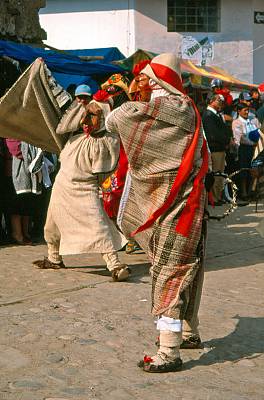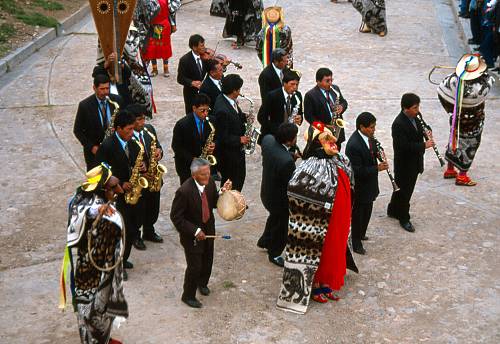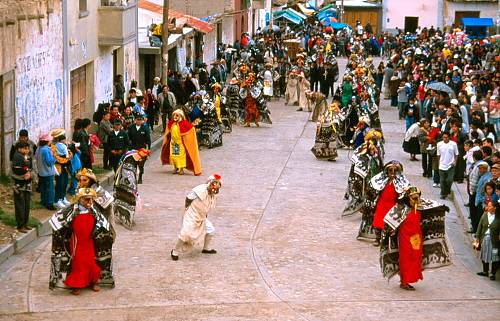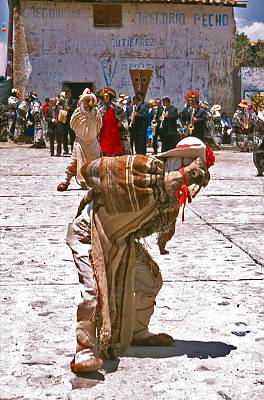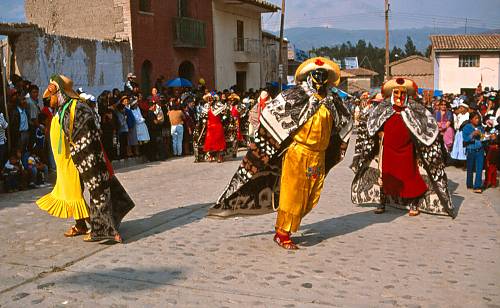Huaconada, ritual dance of Mito
Inscribed in 2010 (5.COM) on the Representative List of the Intangible Cultural Heritage of Humanity

Huaconada is a ritual dance performed in the village of Mito in the province of Concepción in the central Peruvian Andes. Every year, on the first three days of January, masked men known as huacones perform a choreographed series of dances in the centre of the town. The huacones represent the former council of elders, and for the duration of Huaconada they become the town’s highest authority. The tronador (whip) they carry and their masks emphasize this role, the latter characterized by accentuated noses that evoke the beak of the condor, creature that represents the spirit of the sacred mountains. The dance involves two types of huacones: elders who wear traditional costumes and finely-carved masks inspiring respect and fear; and modern huacones who wear colourful dress, their masks embodying terror, sadness or mockery. During Huaconada, the modern huacones dance circumscribed steps around the elders, who have greater freedom to dance improvised movements because of their seniority. An orchestra plays different rhythms, beating out time on a small indigenous drum called a tinya. Huaconada synthesizes distinctive elements from the Andes and Spain while incorporating new, modern elements. Only those of good conduct and moral integrity may become huacones. The dance is traditionally passed on from father to son, while clothing and masks are also inherited.

